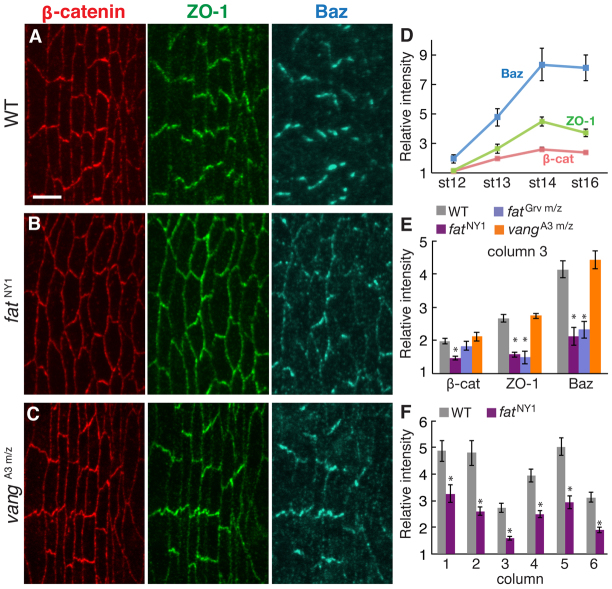Fig. 4.
Fat is required for the planar polarized localization of adherens junction proteins. (A-C) Stage 14 denticle belts stained for β-catenin (red), ZO-1 (green) and Baz (blue) in Drosophila wild type (WT) (A), fatNY1 (B) and embryos maternally and zygotically mutant for vangA3 m/z (C). Ventral views, anterior left. Scale bar: 5 μm. (D) Enrichment of junctional proteins at DV edges (oriented at 0-45° relative to the AP axis) compared with AP edges (oriented at 75-90° relative to the AP axis) in all denticle columns in WT. (E) Enrichment of junctional proteins at DV edges in column 3 of stage 14 WT, fatNY1, fatGrv m/z and vangA3 m/z embryos. The planar polarized accumulation of junctional proteins was significantly reduced in fatNY1 (P<0.001 for β-catenin, ZO-1 and Baz) and fatGrv m/z (P<0.001 for ZO-1 and P<0.02 for Baz). (F) The enrichment of ZO-1 at DV edges was reduced in all columns of fatNY1 embryos at stage 14 (P<0.01 for column 1 and P<0.001 for columns 2-6). A single ratio between the mean DV and AP intensities was calculated for each embryo (five to seven cells in two denticle belts/embryo, three to 12 embryos for each stage and genotype). The mean ± s.e.m. of these values is shown. *P<0.05.

